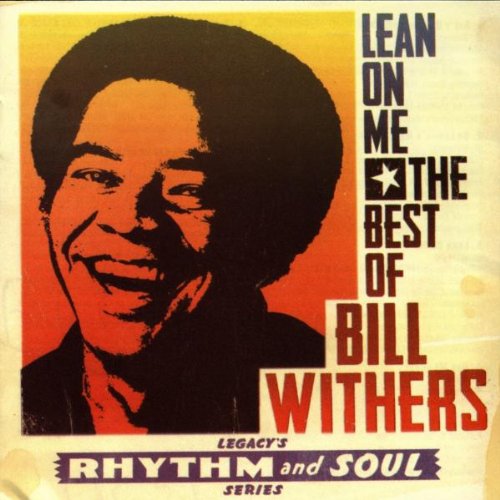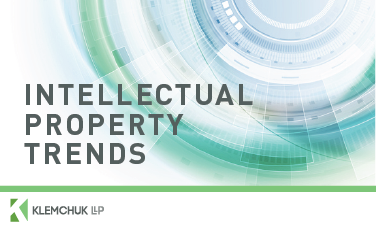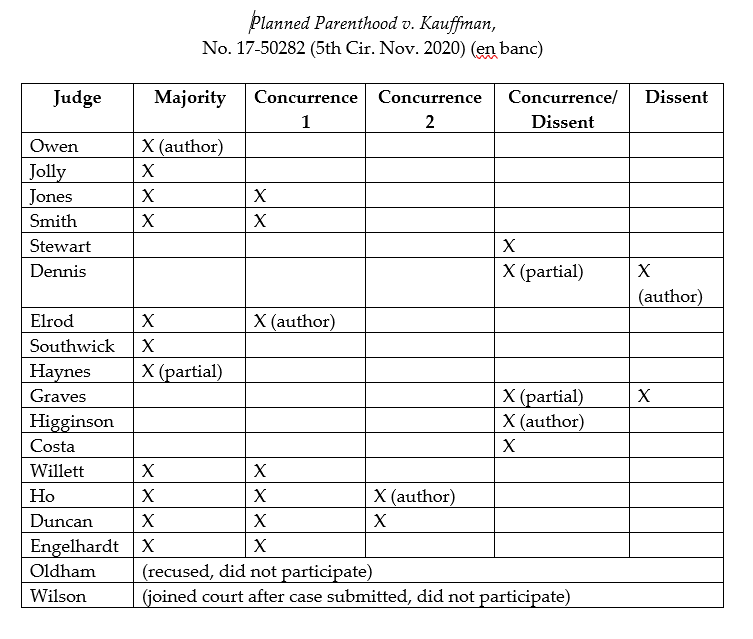Originally published by Winstead.

Under Texas law, when the owners of closely held companies have co-investors, they need to exercise care in managing their business. This need for caution is due in large part to a Texas statute that makes it easier for minority shareholders or minority members of LLC’s (“Minority Owners”) in closely held companies to file derivative lawsuits alleging claims for breach of fiduciary duties against the company’s officers, directors and/or managers (“Control Persons”). See Tex. Bus. Org. Code (“TBOC”) §§ 21.551 and 101.451-463. This derivative Texas statute removes substantial procedural barriers that would otherwise exist for Minority Owners in filing a derivative lawsuit, and it has been the subject of our previous posts. (Read: Shareholder Oppression Claims)
When Minority Owners file derivative claims for breach of fiduciary duties against the company’s Control Persons, however, the Control Persons have significant defenses available to them under Texas law. These “safe harbor” defenses were highlighted in a recent decision by the Austin Court of Appeals, which dismissed most of the shareholders’ claims. See Roels v. Valkenaar, No. 03-19-00502-CV Tex App. Lexis 6684 (Tex. App. – Austin, August 20, 2020, no pet. history). This post reviews the appellate court decision in Roels, and the court’s analysis of the minority shareholders’ claims for breach of fiduciary duty and the available defenses to these claims is helpful for both Control Persons and shareholders to understand.
Elements of Fiduciary Duty Claims
In Roels, the minority shareholders contending that certain of the company’s officers and directors had breached their fiduciary duties to the company by allegedly engaging in interested-director transactions, misusing company resources and failing to pursue a valuable corporate opportunity. The trial court overruled the defendants’ (Governing Persons) motion to dismiss, but the appellate court largely reversed the trial court’s ruling and, for the most part, dismissed the shareholders’ claims. The court’s decision arose in the context of considering a motion to dismiss the Defendants filed under the Texas Citizens Participation Act (“TCPA”). It is not necessary to review the TCPA for our purposes here, however, in focusing on the court’s rulings regarding the shareholders ’breach of fiduciary duty claims and the defenses to those claims.
As a starting point, the Court reviewed the specific elements of the shareholders’ breach of fiduciary duty claims:
The elements of a claim for breach of fiduciary duty are: (1) the existence of a fiduciary duty between the parties; and (2) a breach of that duty by the defendant that either (3) caused damages to the plaintiff, Beck v. Law Offices of Edwin J. (Ted) Terry, Jr., P.C., 284 S.W.3d 416, 429 (Tex. App.—Austin 2009, no pet.), or benefit to the defendant, Lundy v. Masson, 260 S.W.3d 482, 501 (Tex. App.—Houston [14th Dist.] 2008, pet. denied); Jones v. Blume, 196 S.W.3d 440, 447 (Tex. App.—Dallas 2006, pet. denied
Texas Law Protects Governing Persons – The Interested Director Rule
After reviewing the underlying facts of the fiduciary duty claim, the court then evaluated the safe harbor defense that the defendants raised to the allegation that they had engaged in an interested party transaction in violation of their fiduciary duties. TBOC sets forth a statutory framework defining the scope of fiduciary duties that interested persons owe to their companies, as well as providing Governing Persons with statutory protection against claims when they meet specific statutory requirements. Specifically, TBOC Section 21.418, which is also known as the Interested Director Rule, provides interested governing persons—under certain conditions—with a “safe harbor” immunity. A similar TBOC provision applies to Governing Persons in LLCs. See TBOC § 101.255. The three conditions that. Governing Persons must satisfy to avoid liability for what would otherwise be improper, self-dealing transactions are discussed below.
First, the Governing Persons must disclose all material facts related to the transaction to the board of directors or the managers of the company, and a majority of these non-interested directors, members or managers (i.e., governing persons with no self-interest) must approve the transaction in good faith. Alternatively, the Governing Persons can appoint a special committee to consider the transaction, disclose all material facts regarding the transaction to the members of the special committee, and a majority of disinterested committee members must then approve the transaction in good faith.
Second, the Governing Persons must disclose all material facts related to the transaction to the shareholders or members who must then approve the transaction in good faith. Material facts are all facts relevant to fairness, including, but not limited to, the extent of the conflict, the price terms, and the effect of those price terms on the members. Disclosure of all material facts relevant to why Governing Persons might approve or disprove the transaction is required.
The Texas Legislature did not include a definition of “good faith” in the TBOC and case law is sparse regarding this provision. The good faith obligation is likely part of the Governing Person’s fiduciary duties, however, because Texas law has long held that good faith is included in the duty of loyalty. This good faith requirement forbids conduct by the Governing Persons contrary to the interests of the entity to which the fiduciary duty is owed, regardless of whether another is benefited. The other common meaning of good faith is contractual in referring to implied duties of parties to a contract, but Texas law does not favor or generally adopt implied duties. Thus, a Texas court would likely rely on fiduciary duty case law when considering the meaning of “good faith” in the TBOC.
The final statutory condition protecting Governing Persons from liability from claims for fiduciary duty based on alleged self-dealing transactions is the fairness defense—Governing Persons will not be held liable to minority owners if the transaction is determined to be fair to the company. This essentially codifies the common law fairness requirement.
In Roels, the court dismissed the shareholders’ interested party claims after determining that the defendants had:
… cited to evidence they presented with their motion to dismiss demonstrating that the Board unanimously consented to and approved of the Series C Deal after all material facts were disclosed. See Tex. Bus. Orgs. Code § 21.418(c) (providing that if interested-director transaction has either been approved by Board after material facts are disclosed or is fair to corporation, shareholders will have “no cause of action” against director for breach of duty with respect to transaction); In re Estate of Poe, 591 S.W.3d 607, 627-28 (Tex. App.—El Paso 2019, pet. filed) (noting that “common law savings rules” of board consent to interested-director transactions were codified by Business Organizations Code’s safe-harbor provisions). The shareholders neither contest this evidence nor allege any specific material facts that Roels and Barshop failed to disclose. Accordingly, we hold that—assuming the shareholders established a prima facie case for Roels‘s and Barshop‘s breaches with respect to the Series C Deal—the defendants established by a preponderance of the evidence a valid safe-harbor defense to that claim, and the trial court should have dismissed the shareholders’ claims related to the Series C Deal.
In sum, the court assumed for purposes of its analysis that the minority shareholders could make out a basic (prima facie) breach of fiduciary claim against the Governing Persons. The court nevertheless held, however, that because the defendants had fully disclosed all of the material facts to the Board and the board had voted to approve the transaction, the Governing Persons were protected from liability by the safe harbor of the Interested Director Rule.
Business Judgment Rule Also Protects Governing Persons
The minority shareholders in Roels asserted claims against the Governing Persons based on loans they made to the company from affiliated businesses they controlled. The shareholders alleged that these loans provided them with personal benefits that constituted self-dealing. In considering this claim, the court found that that the shareholders failed to present any evidence that the company had been damaged by the loans at issue. The court stated:
“To prove the damage-to-plaintiff or benefit-to-defendant element of a claim for breach of fiduciary duty based on self-dealing, a plaintiff must demonstrate that the fiduciary obtained a benefit for itself either at the expense of its principal or without equally sharing the benefit with the principal.”
While the shareholders have alleged in conclusory fashion that the loans contained “non-market terms” and have “disproportionately benefitted” Roels and Barshop, they have not identified any specific harm to the Company or benefit to the defendants as a direct result of the loans. For instance, they have not cited to any evidence that MBlock and Barshop Ventures have accelerated or otherwise sought to enforce the notes, attempted to seize collateral, or deducted payments from the Company’s receivables (although they purportedly had the right to do so). Nor have they alleged that the Company has made any payments on the loans.
Regarding the misappropriation claim, the court dismissed this claim against one of the defendants, when there was no evidence that he had intended to benefit personally from the company’s information. The court found that dismissal of this claim was not appropriate against one of the defendants, however, who was also an officer of an affiliated entity that had allegedly misappropriated company information. For this Defendant, the court concluded that it could be reasonably inferred he had pursued the acquisition at issue with the intent to personally benefit from the company’s expenditure of funds that were used to conduct due diligence.
Protection Afforded By The Business Judgment Rule
The shareholders in Roels also asserted a number of claims against the company’s CEO based on his alleged dereliction of duties. The “common thread” of these claims as recited by the Court was that the CEO had “allegedly made inept financial and management decisions” and also “promoted and executed second-rate deals” that favored other board members, which were not in the company’s best interests. The court’s treatment of these claims is important, because minority shareholders often have strong criticisms of the actions and decisions that are made by the Governing Persons.
These claims of mismanagement triggered the defendants’ assertion of the business judgment rule defense, which the court aptly summarized as follows:
In Texas, the business judgment rule generally protects company officers and directors for alleged breaches of duties that are based on actions that are negligent, unwise, inexpedient, or imprudent if the actions were “within the exercise of their discretion and judgment in the development or prosecution of the enterprise in which their interests are involved.” Sneed, 465 S.W.3d at 178. Essentially, the business judgment rule, as pronounced long ago by the supreme court in Cates and reaffirmed more recently in Sneed, operates at this stage of a lawsuit as a requirement that a plaintiff plead more than “mere mismanagement,” neglect, abuse of discretion, or unwise and inexpedient acts to state a cause of action. See Sneed, 465 S.W.3d at 186-87 (noting that “[i]t is insufficient for a shareholder plaintiff to allege a derivative right to relief against a corporation’s officers or directors for breach of a duty based upon ‘mere mismanagement or neglect . . . , or the abuse of discretion lodged in them in the conduct of the company’s business,’” which allegations “may be disposed of on special exceptions or summary judgment”)(quoting and citing Cates, 11 S.W. at 849)).
The court also noted that the shareholders had not alleged that the defendants engaged in fraud or offered evidence of any damages the company had sustained from alleged fraudulent conduct. In the absence of evidence of fraudulent conduct by the CEO or damages caused by his fraudulent actions, the court concluded that the business judgment rule required dismissal of all of the shareholders’ claims based on the CEO’s alleged mismanagement. In the Court’s words:
Because the shareholders have not identified clear and specific evidence of conduct by Pabst that does not fall within the business judgment rule, we conclude that the trial court should have granted his motion to dismiss as to the shareholders’ “dereliction of duties” claims.
Conclusion
The majority owners of closely held private companies are given wide discretion to operate their companies as they choose, and the Business Judgment Rule protects them from liability even when they mismanage the business in ways that are negligent or unwise. Further, majority owners can engage in interested party transactions when they make full disclosure of all material facts and the proposed transaction is approved by the required majority of Governing Persons. But these protections afforded to majority owners by Texas law do not mean that they have carte blanche to exploit their control over the business to act in ways that solely benefit themselves at the company’s expense. Majority owners remain subject to liability to their minority partners in derivative lawsuits when the owners engage in self-dealing that violates their fiduciary duties and harms the company, because this improper conduct is not protected by the Business Judgment Rule. Similarly, majority owners who conceal key information about a self-interested transaction from their Governance Persons and engage in deals with the company that do not pass the fairness test will not find a safe harbor in the Interested Director Rule.
Curated by Texas Bar Today. Follow us on Twitter @texasbartoday.
from Texas Bar Today https://ift.tt/33b7dVz
via
Abogado Aly Website
 The Fifth Court granted mandamus relief in a proceeding related to the removal of a mechanic’s lien in In re J&S Utilities, No. 05-20-00696-CV (Nov. 24, 2020) (mem. op.), holding as follows:
The Fifth Court granted mandamus relief in a proceeding related to the removal of a mechanic’s lien in In re J&S Utilities, No. 05-20-00696-CV (Nov. 24, 2020) (mem. op.), holding as follows:






 GC Client 1: Provide memos explaining new court cases/laws/regulations that would affect our business.
GC Client 1: Provide memos explaining new court cases/laws/regulations that would affect our business.
